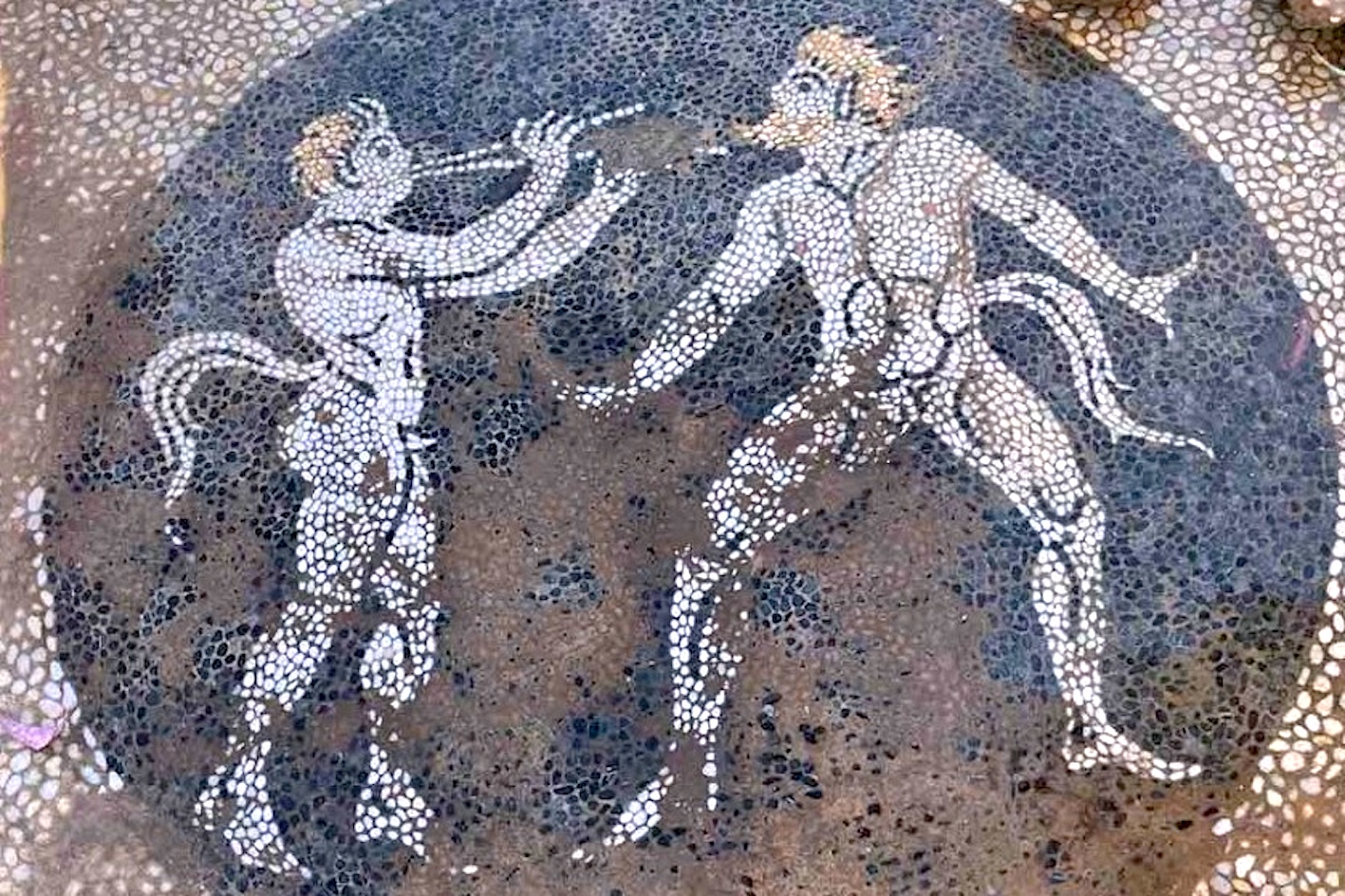A fascinating mosaic floor featuring hybrid human-animal spirits has been discovered in an ancient Greek city.
This mosaic was unearthed in present-day Eretria on the island of Evia, Greece, during water pipeline renovations. The site is known for its historical ruins dating back to an influential Greek settlement from the mid-first millennium B.C.
During the pipeline construction, parts of a 4th-century B.C. house came to light, revealing a well-preserved mosaic floor made from pebbles, as reported by the Greek Ministry of Culture.
The discovery is situated in the heart of the ancient city, encompassing a nearly square room where the mosaic resides. The artwork is crafted from small natural pebbles, showcasing two male figures with animal-like traits like horns, tails, and pointed ears.

These figures represent satyrs, mythical nature spirits from ancient Greek lore. Satyrs typically exhibit a blend of human and animal characteristics, often resembling horses or goats.
They are associated with Dionysus, the Greek god tied to fertility, wine, revelry, and ecstatic rituals. Satyrs are commonly depicted indulging in hedonistic activities like drinking, dancing, and music.
This particular mosaic features one youthful satyr playing a double flute, while another, appearing older and bearded, dances in delight to the melody.
A variety of colored pebbles—white, black, red, and yellow—were utilized to accentuate the satyrs’ features, with yellow pebbles notably used for their hair.
The layout of the room suggests it functioned as a venue for gatherings, feasts, and celebrations.
Archaeologists estimate that this house and its pebble mosaic date back to the mid-4th century B.C., a period when more opulent private homes began to arise in Eretria. These residences typically featured a central courtyard surrounded by private family areas and public spaces suitable for official events.
The Ministry emphasized that the mosaic floor is in “excellent” condition and noted the “uniqueness” of its central design.
